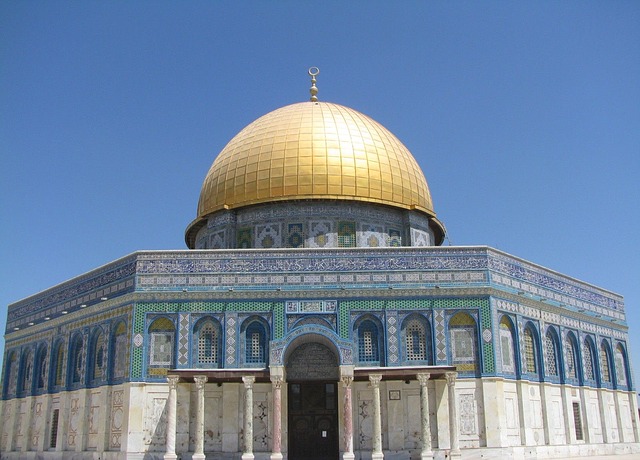Why are domes popular?
The dome has a long history in the built environment, and has been a design feature of many different kinds of architecture around the world. Domes are prominent features of Persian, Roman, Byzantine, Islamic, Italian Renaissance design and so on.
In its simplest form, a dome is a hollow, approximately semi-spherical structural element. However, there are many variations on this basic shape. The ‘Building Construction Handbook’ describes domesas: ‘Double curvature shells which can be rotationally formed by any curved geometrical plane figure rotating about a central vertical axis.’ For more information, see Types of domes.
Other than the monumental and impressive aesthetics of domes, they have several characteristics that have made them such a popular architectural feature.
- Domes can be very efficient and cost-effective structures, as significantly less material may be required to construct them and they are often lighter in weight than other roof types.
- There is typically a minimum of 30% less surface area in a dome than other comparable structural shapes. This reduced surface area can increase the energy efficiency of domes, as they can require 30% less energy for heating and cooling.
- They are self-supporting, stabilised by the force of gravity acting on their weight to hold them in compression.
- They are able to span large areas and require no intermediary columns, creating a free space below.
- They are resistant to high wind conditions such as hurricanes because of the lack of corners, angles and flat surfaces. Instead, their curved shape allows wind to pass smoothly over their surface, creating minimal pressure or turbulence.
- Domes can have good acoustic qualities, making them a popular choice for buildings where it is necessary for sound to travel over large distances, such as public arena.
- Domes can be constructed from a variety of materials, from traditional masonry and concrete, to cast iron, timber and steel.
- Lightweight materials such as architectural fabrics and cable structures can be used to create ‘domes’; for the most part these are not true domes as their components have an anticlastic shape, however inflated fabric structures can be dome shaped.
- In terms of semiology, by reinforcing centrality and singularity, the form of the dome can establish the primacy of the circle of space directly below.
- Philosophically, they can reinforce the notion of a centralised and singular power system, whether absolute monarchy, monotheism, hegemonic dictatorship and so on.
- They have a visual simplicity, and internally can be virtually featureless, giving them an infinite quality that can be associated with the eternity or the heavens.
[edit] Find out more
[edit] Related articles on Designing Buildings Wiki
Featured articles and news
Latest Build UK Building Safety Regime explainer published
Key elements in one short, now updated document.
UKGBC launch the UK Climate Resilience Roadmap
First guidance of its kind on direct climate impacts for the built environment and how it can adapt.
CLC Health, Safety and Wellbeing Strategy 2025
Launched by the Minister for Industry to look at fatalities on site, improving mental health and other issues.
One of the most impressive Victorian architects. Book review.
Common Assessment Standard now with building safety
New CAS update now includes mandatory building safety questions.
RTPI leader to become new CIOB Chief Executive Officer
Dr Victoria Hills MRTPI, FICE to take over after Caroline Gumble’s departure.
Social and affordable housing, a long term plan for delivery
The “Delivering a Decade of Renewal for Social and Affordable Housing” strategy sets out future path.
A change to adoptive architecture
Effects of global weather warming on architectural detailing, material choice and human interaction.
The proposed publicly owned and backed subsidiary of Homes England, to facilitate new homes.
How big is the problem and what can we do to mitigate the effects?
Overheating guidance and tools for building designers
A number of cool guides to help with the heat.
The UK's Modern Industrial Strategy: A 10 year plan
Previous consultation criticism, current key elements and general support with some persisting reservations.
Building Safety Regulator reforms
New roles, new staff and a new fast track service pave the way for a single construction regulator.
Architectural Technologist CPDs and Communications
CIAT CPD… and how you can do it!
Cooling centres and cool spaces
Managing extreme heat in cities by directing the public to places for heat stress relief and water sources.
Winter gardens: A brief history and warm variations
Extending the season with glass in different forms and terms.
Restoring Great Yarmouth's Winter Gardens
Transforming one of the least sustainable constructions imaginable.























